3D Printing Guide
The Ultimate Guide to the Best PLA Filaments

Scott Gabdullin
Updated on November 14, 2023


Updated on November 14, 2023

Share This Post
As 3D printing continues to grow in popularity among many industries, including healthcare, aerospace, and automotive manufacturing, many individuals are taking advantage of the growing list of 3D printing materials aimed at the hobbyist market.
But if you are just getting into 3D printing, it can be overwhelming to figure out what 3d printer filament to use.
PLA filament is one of the most affordable, easy-to-use, and versatile printing materials you can buy. In this guide, we’ll briefly introduce PLA filaments and give you a great list of eleven of the best ones on the market today.
Let’s dive in!
PLA stands for Polylactic Acid. This 3D printer filament is one of the most popular materials for desktop 3D printing.
Many hobbyist printers default to PLA filament for their extrusion-based 3D printer thanks to the material being inexpensive and useful for many different applications.
You can also use PLA filament at relatively low temperatures and without a heated bed.
PLA is a polyester-based material derived from a mixture of plant starches such as sugar cane, sugar beet pulp, corn, maize, and cassava.
Sugar is pulled from these sources, fermented, and turned into lactic acid. The lactic acid is then processed and turned into polylactic acid.
Because manufacturers use plant materials, PLA is renewable and biodegradable, which means it is environmentally friendly. In fact, PLA produces 68% less greenhouse gas and requires 65% less energy than conventional plastic.
As a bonus, since manufacturers create PLA using sugars, it gives off a sweet, pleasant scent during the printing process.
The versatility and cost of PLA filament make it an excellent material for first-time printers. However, it does have its drawbacks, such as not being as strong as other materials like ABS or PETG.
Because of its properties, PLA is a fantastic choice for dozens of 3D printing projects where the form is more important than function.
Here are some of the most common printing applications for PLA filament:
There are many advantages to using PLA filaments when 3D printing, as well as some disadvantages. Let’s take a look at some of the pros and cons of PLA filaments now.
Pros:
Cons:
When you are first getting started with 3D printing, it might seem as though most brands offer virtually identical PLA filaments that perhaps only vary in color and price.
However, there are actually many factors that separate the best PLA filaments from the bottom-of-the-barrel options. While a low-price PLA can be tempting, especially on a budget, you are much better off finding the highest-quality PLA filament you can afford.
Here are a few factors to consider as you begin researching the various PLA brands on the market.
3D printing filament composition is simply the list of ingredients that goes into making the PLA. Most 3D printing filaments are named for their most prominent single component, such as PLA being named for polylactic acid.
However, you will almost never find a “pure” single-ingredient PLA filament. Instead, manufacturers use additives and other components which they mix with the primary ingredient.
A long list of ingredients in a PLA filament might seem like a red flag that a brand is of low quality, and sometimes that is true, but the extra ingredients often play an important role.
PLA makers use additives for a variety of reasons. Some additives help dilute the primary material, reducing the cost of the finished product.
Some brands utilize additives to create PLA filaments that are composites with properties they can’t achieve with plastics alone. For instance, some brands use woods, carbon, iron, steel, and other additives to add unique visual or performance properties to PLA filament.
Other additives, such as plastic, can be used by manufacturers to increase the strength or adhesion quality of the PLA. Companies often designate these types of filaments as PLA+ or something similar.
If you are interested in what additives are in your favorite PLAs, many manufacturers provide safety data sheets (SDS) with a list of material components on their websites.
Perhaps the most critical aspect for successfully printing with PLA is choosing a top filament compatible with your 3D printer.
For PLA, the most important is the diameter of the filament. If your printer uses a 1.75mm diameter, then that is what you have to buy. If you want to print with another size, such as 2.85mm or 3.00mm, you will need to purchase the appropriate hardware to upgrade your system.
Also, be aware that spool sizes differ. If you buy a spool that doesn’t fit in your printer’s spool holder, you won’t be able to use it.
Width tolerance is a significant factor in the final quality of your printed items, and it can be a great specification to use to judge whether or not a brand is worth your time.
Many manufacturers provide this number, so you know what to expect. When you see a measurement such as ±0.03mm, that means the width of the filament varies by plus or minus 0.03mm in width for the entire spool.
Any filament of around ±0.05mm or less is a good choice that won’t cause too many issues.
Wider tolerances mean the PLA filament is of low quality. These filaments often cause clogging, bad layer lines, and other inconsistencies.
As mentioned in the Additives section, manufacturers often use unique ingredients to give PLA filaments different aesthetic or performance values.
Some special PLAs that you can find on the market include:
These are just a few of the special PLAs that different brands offer. Manufacturers are developing new PLAs all the time, so take a little time and look at what is available that might work for you.
Because PLA is made from naturally derived ingredients and is biodegradable, it is crucial to vacuum seal it for storage and transportation.
Without vacuum sealing, moisture can get into the filament, causing it to break down. Vacuum packaging is also essential for PLA filament because if too much water escapes from the filament, the PLA will grow brittle and weak.
Using this same logic, you should consider storing your PLA in an airtight container after you use it. This container doesn’t need to be anything special. A Ziploc bag, Tupperware, or similar container will keep your PLAs from drying out.
The cost of 3D printer filament is always a factor for hobbyists. The best practice is to look for the most high-value option rather than finding the cheapest PLA filaments.
When shopping for PLAs, start by comparing prices based on the thickness and spool sizes. Then you can zero in on tolerances, material composition, and any special features you are concerned with.
Many manufacturers also offer multi-packs which can cost more upfront but are ultimately less expensive than re-buying individual spools multiple times.
The 3D printing industry is relatively new, and the number of PLA manufacturers seems to grow daily. It is great to see the industry expanding, but the lack of brand name recognition can make it challenging to know which brands are the best.
One of the most reliable ways to sort between brands is with customer reviews. Many brands have user reviews on their websites. You can also visit marketplaces such as Amazon to find a plethora of reviews that will give you a comprehensive picture of the quality of each brand’s PLA filaments.
Let’s take a look at eleven of the best PLA filament brands.
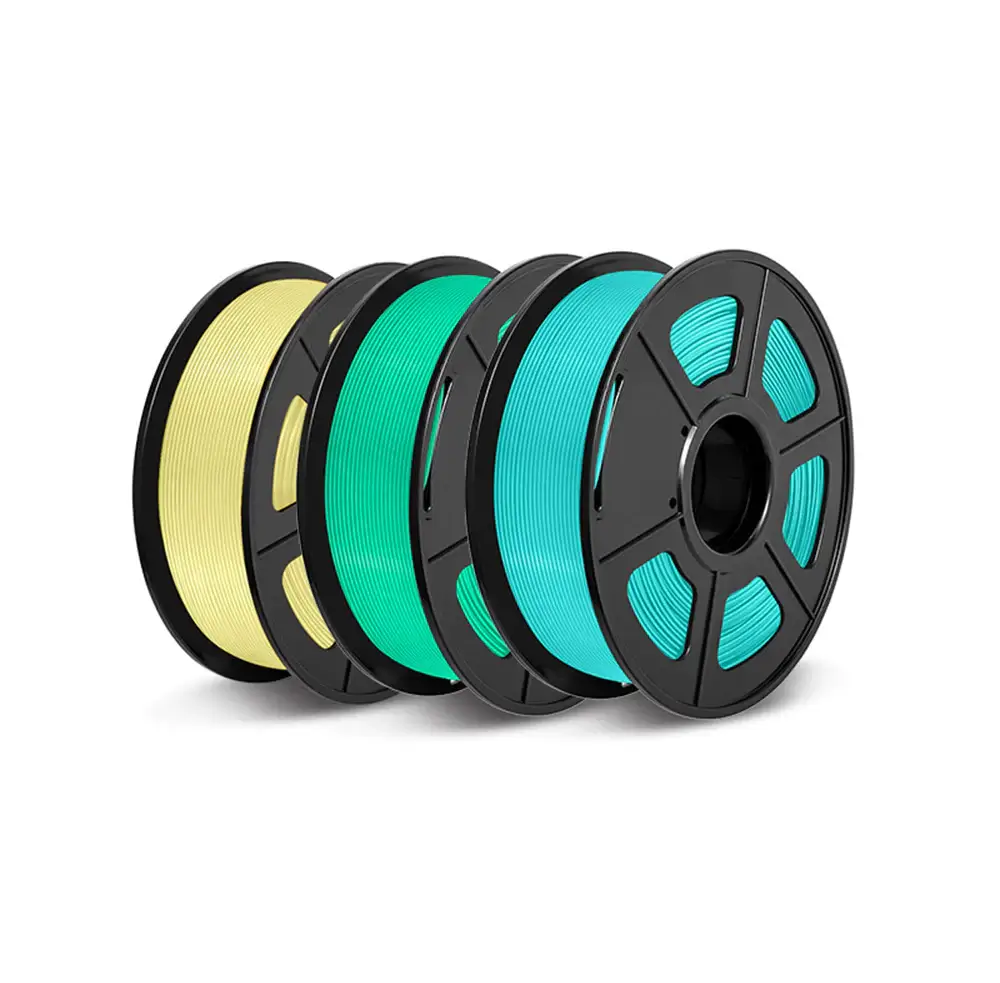
Sunlu’s PLA filament is a type of thermoplastic filament widely recognized within the 3D printing community for its ease of use, quality, and eco-friendly properties. Below is a detailed description of Sunlu’s PLA based on general information typically associated with their products and PLA’s common characteristics. However, for the most accurate and up-to-date product specifications, it’s always best to refer directly to Sunlu’s product listings or official materials.
Sunlu takes precision seriously, and this is reflected in their PLA filament’s consistent diameter, which is critical in ensuring steady material flow through the printer nozzle. This consistency mitigates common printing anomalies caused by irregular filament dimensions.
For users committed to ecological responsibility, Sunlu’s PLA represents a conscious choice to minimize environmental impact. This commitment is not just about the material itself but extends to the broader context of resource usage and post-consumer waste management associated with 3D printing.
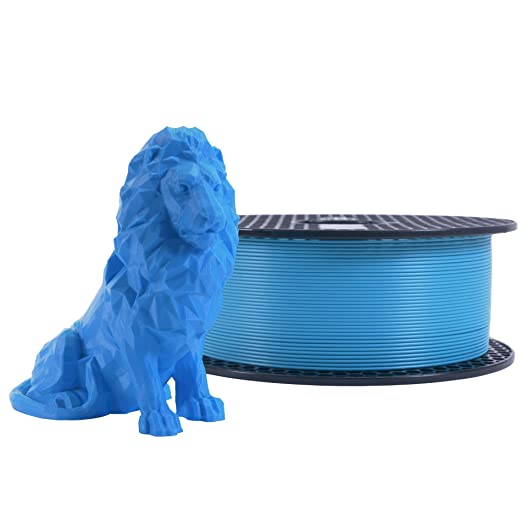
Prusament is a top-tier 3D printing company that sets the standard for quality PLA filaments that are dyed to a rich, vibrant color tone and print smoothly. All of the company’s PLAs are manufactured in-house by Prusa Polymers.
Prusament uses only the strictest standards for their PLAs, settling for nothing less than a 0.02mm tolerance on all their filaments. This tight tolerance means that all of the brand’s PLAs print with minimal oozing or clogging and sharp details requiring minimal post-printing cleanup.
PLAs from Prusament come in a wide range of over two dozen colors. And the dye color for each filament is so vibrant that we struggle to think of another brand that could beat it.
Prusament PLAs are available as 1kg spools of 1.75mm wide filament. The company uses plastic spools but with a central paper tube that helps reduce the amount of plastic by about 45% compared to fully plastic spools.
Our only real issue with Prusament is that their PLA filaments are pretty expensive. In some cases, you may be able to find two spools of another brand for the cost of one spool of Prusament PLA.
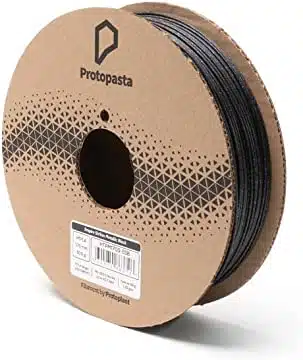
The Protopasta brand was started on Kickstarter in 2013 by founders Dustin Cram, Alexander Dick, and Aaron Cram. Since then, the brand has grown to include many unique PLA filaments, unlike anything other brands provide.
Protopasta has options for 1.75mm and 2.85mm, with spool sizes ranging from 50g to 3 kg, depending on the variety of PLA you want to buy. Among the options for Protopasta PLA are:
Protopasta also offers a filament called HTPLA which stands for “Hella Tough” PLA. This special PLA filament can be heat treated for high-temperature resistance that Protopasta claims can survive temperatures of over 285℉ (140℃). The company accomplishes this feature through a heat-treating process that changes the structure from amorphous to crystalline.
Protopasta is an excellent brand for special PLA filaments, but the brand does have a couple of drawbacks compared to some other PLA filament brands. For one, Protopasta offers a limited number of colors and diameters. The brand is also more expensive than many other brands that are being marketed toward at-home 3D printers.
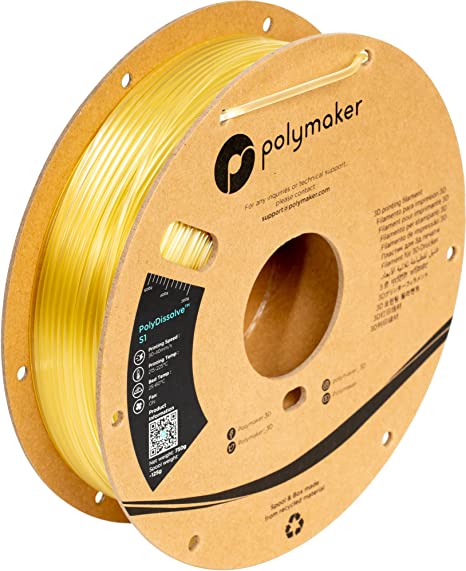
Polymaker is a famous brand that came onto the scene in 2013 and quickly grew to offer a large variety of filaments for engineers and hobbyists. The company headquarters is in Shanghai, China, but you can find their products worldwide.
The company has a great selection of PLAs, including its ultra-flexible PolyFlex PLA, a nano-reinforced PolyMak PLA, a series of specialty PLAs, and many more. Polymaker’s flagship PLA is its PolyTerra PLA which comes in many fantastic color variations in categories like matte, muted, glitter, silk shiny, and others.
Polymaker offers all of the PLA filaments in a 1.75mm diameter, and some are also in 2.85mm.
The colors of Polymaker’s PLAs are vibrant, and the filament produces sharp details with very little oozing or stringing.
While Polymaker offers a ton of PLA options for desktop 3d printers, they also have PLAs for 3D Pens. Head to Polymaker’s website to learn more about the PLA 3D Pen filaments multi-pack that includes 12 regular PLA colors and 8 silk PLA colors.
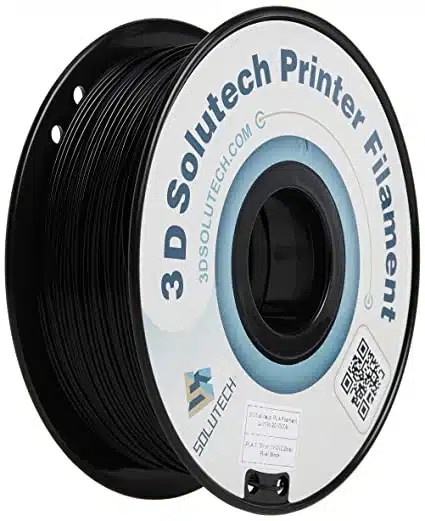
The 3D Solutech company is based in Seattle, WA, and has been providing PLA filaments since 2014. The brand offers multiple color options at a very affordable price level, making its PLA filaments an excellent choice for first-time printers.
3D Solutech reports that it has conducted extensive compatibility research by testing its PLA filaments in over 30 of the most popular 3D printers available on the market today.
Even better, 3D Solutech produces its PLAs to a high standard resulting in an incredibly smooth finished product. Solutech PLAs exhibit limited stringing and deliver sharp, detailed products.
The 3D Solutech company also does a great job of creating rich colors thanks to their unique three-barrel color mixing process that makes their PLA colors saturated and vibrant.
The company vacuum seals all of its 3D Solutech PLAs in high-grade packaging materials to create a fully isolated, moisturized environment that keeps the PLA from drying out and growing brittle.
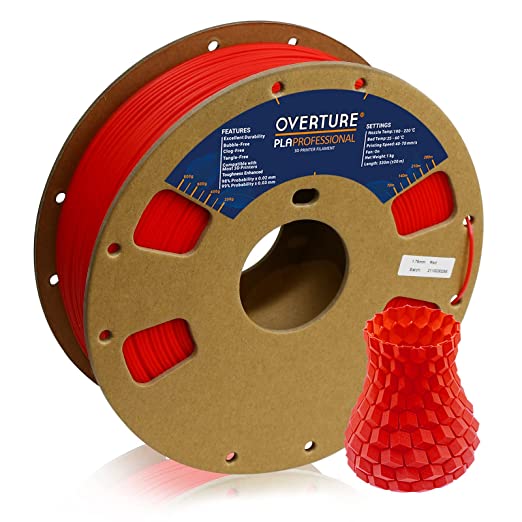
Overture has been producing PLA filaments for 3D printing for over eight years, and their high standards and affordable prices have made them one of the go-to name brands.
Some of Overture’s PLA filaments include:
Overture also offers options for silk and matte PLAs in many different colors.
The company provides all of its PLA filaments in 1.75mm diameter, and the spools are 1 kg (2.2 lbs) in size. Most of the filaments have a tolerance of plus or minus 0.03mm. Overture manufactures a few PLAs with a tolerance of plus or minus 0.05mm instead.
The Overture PLA product line is a solid choice with options for beginners or professionals. The PLAs print well, with little to no stringing and excellent layer bonding. Overture is also cheaper than some other brands, but it would be nice to be able to choose different diameters and spool sizes.
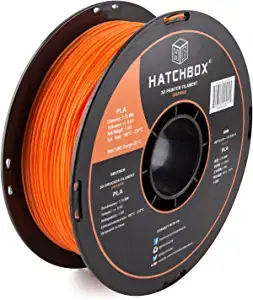
Hatchbox is an American filament brand that offers a ton of different filaments, including ABS, PETG, and PLA. The PLA filaments are high-quality and are manufactured in China by the North Bridge New Material Technology company.
The variety of PLA filaments from Hatchbox includes 1.75mm and 3.00mm sizes, as well as wood, metallic, neon, and other styles.
Hatchbox is one of the most popular brands for hobbyists. The company promises that it precisely manufactures its PLA filaments. Hatchbox PLAs range in precision by a very tight variation of plus or minus 0.03mm.
The Hatchbox PLA filaments are a favorite choice for many 3d printing enthusiasts because they feature vibrant colors, rarely cause issues such as clogging, and the filament provides a glossy and smooth finished product.
Hatchbox offers free shipping on all of its filaments for customers in the U.S.A. and protects its products with a 30-day satisfaction guarantee.
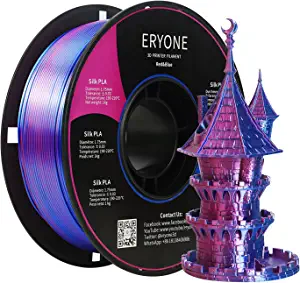
Eryone, the self-brand of Shenzhen Eryone Technology Co., Ltd, is a new brand of 3D printing technology that started in 2018. They offer various PLAs and other types of filaments based on the company’s strong commitment to research and development.
Some of the different PLAs that Eryone makes include regular, matte, ultra silk, rainbow, and a sparkly Galaxy PLA. All of the company’s PLAs come in 1.75mm diameter with a tolerance of 0.05mm.
There are also many specialized PLAs from Eryone that are worth checking out. Options include carbon-infused, glow-in-the-dark, marble, and wood PLAs. However, our favorite specialty PLA from Eryone is its scented PLA. Eryone’s scented PLAs include Rose, lavender, tulip, jasmine, strawberry, orange, apple, and mango.
Eryone also sells a heated dryer box for storing and drying out your PLA filament spool before using it. Check it out here if you are tired of waiting for your PLAs to dry naturally.
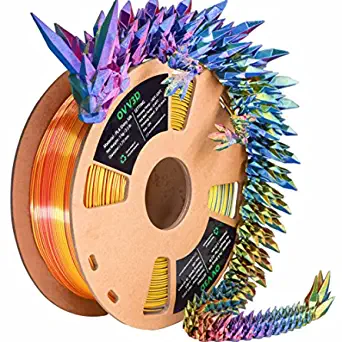
The OVV3D brand provides special PLA filaments that you can use to create visually stunning items that will look like nothing else you have ever printed before.
The first of OVV3D’s special PLA products is their Tri-Color PLA, a rainbow silk PLA. Tri-color options include:
OVV3D also offers their gorgeous Dark Gradient series PLA which includes silky, shiny PLAs such as:
Regardless of the version of OVV3D PLA filament you buy, you’ll get a 1.75mm diameter filament that has a variation of only 0.02mm. The brand also promises no jamming, bubbling, tangling, or layer lines.
The only real downside for this brand is also its strength. They specialize in unique PLA filaments to the exclusion of everything else. If you need a matte PLA or single-color option, there will be other, better options than OVV3D.
OVV3D PLA filaments are rolled on a recyclable cardboard spool and packaged in an eco-friendly paper box. Every OVV3D product is vacuum sealed for moisture control.
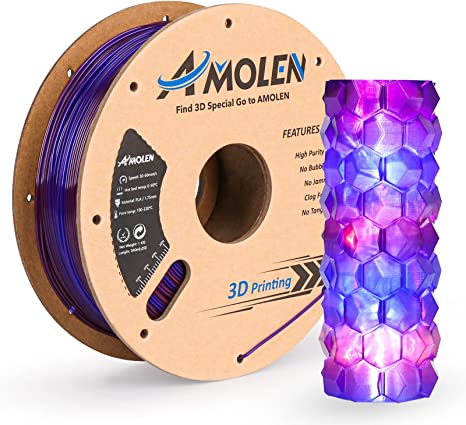
Similar to OVV3D, AMOLEN is a company that makes fun, unique PLA filaments that you can use to create equally fun and exciting-looking items. Since 2017, AMOLEN has produced its PLA filaments using corn materials from America while the company itself is based in Shenzhen in Guangdong, China.
Along with PETG, ABS, TPU, and other kinds of filaments, AMOLEN also produces high-quality PLA material. Here are some of the awesome PLA offerings from AMOLEN:
AMOLEN sells its PLA filaments in 1.75mm thickness and promises a precision variation of only 0.03mm.
As a special note, AMOLEN also offers a reusable vacuum bag sealing kit with two different sizes of vacuum bags. This kit is a great option for storing PLAs to protect them from moisture.
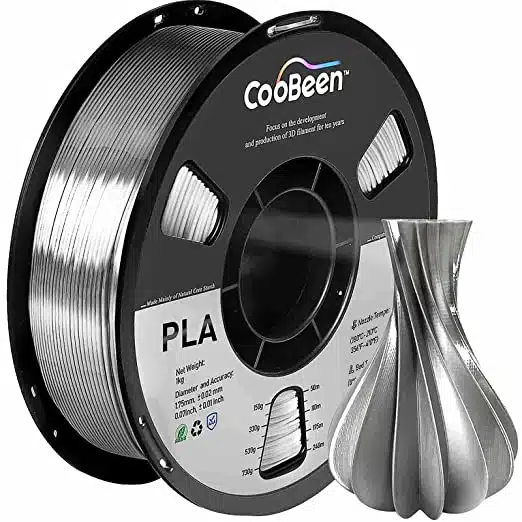
The CooBeen company is based in Guangdong, China. This brand has many different 3d printing materials, including standard PLA filament, silk PLA, wood PLA, and carbon fiber PLA.
Along with dozens of solid, matte colors, the company makes multiple colors of shiny, metallic silk PLA that are vibrant and glossy. All of CooBeen’s PLAs come in 1.75mm diameter, and the company manufactures its products to a very high standard of plus or minus 0.02mm precision.
If you need a PLA for a project with strict tolerances, you can do a lot worse than CooBeen PLA. This brand’s PLA filaments are incredibly strong and tough. They also display practically no shrinkage and excellent layer bonding that any engineer would be pleased with.
CooBeen protects its PLA filaments with a moisture-blocking vacuum sealing process. They also offer a worry-free guarantee and lifetime consulting to help ensure you get the product you need to finish your next 3D printing project.

The Inland company is a technology manufacturer that produces many products, including solid-state drives, flash memory, power supply devices, and PLA filaments. Despite not solely focusing on 3D printer filaments, Inland has a solid reputation for making filaments that have rich colors and print cleanly.
Inland has options for PLA or PLA+ filaments, and you can get a variety of colors as well as matte, shiny, marble, and wood options.
Inland PLA filaments print with very little odor. They also are not prone to clogging regardless of the size and amount of detail in your prints.
You can get Inland PLAs in a 1.75mm diameter and as spools of 1kg. And recently, Inland switched all of its PLAs to cardboard spools that are biodegradable and add to the product’s environmentally-conscious design.
Here are a couple of the most commonly asked questions we get about 3d printing with PLA filament materials.
Yes, PLA is one of the best 3D printer filaments to use if you plan on painting your items. It is essential to prep your PLA print by removing any supports, sanding the surface, and applying a primer before painting.
With the proper preparation, just about any paint will work on PLA. We recommend using acrylic paints, enamels, or lacquers. You can use brushes, spray cans, or any other means of application that you desire.
Opinions can vary, but we find that PLA is versatile enough to be used between 180 ℃ and 230 ℃. For the best results, try using 210 ℃.
PLA is an attractive choice for budget-conscious printers in part because it doesn’t require a printer with a heated bed. However, if your printer does have a heated bed, set it somewhere between 20 ℃ and 60 ℃.
We also recommend using a cooling fan because it helps limit PLA oozing and helps produce the most accurate details and sharpest forms.
Share Article

We are dedicated to delivering honest and objective reviews. Our mission is to help you select the right 3D products for your specific needs, budget, and interests.
Amazon.com Disclosure: As Amazon Associates, we earn from qualifying purchases.